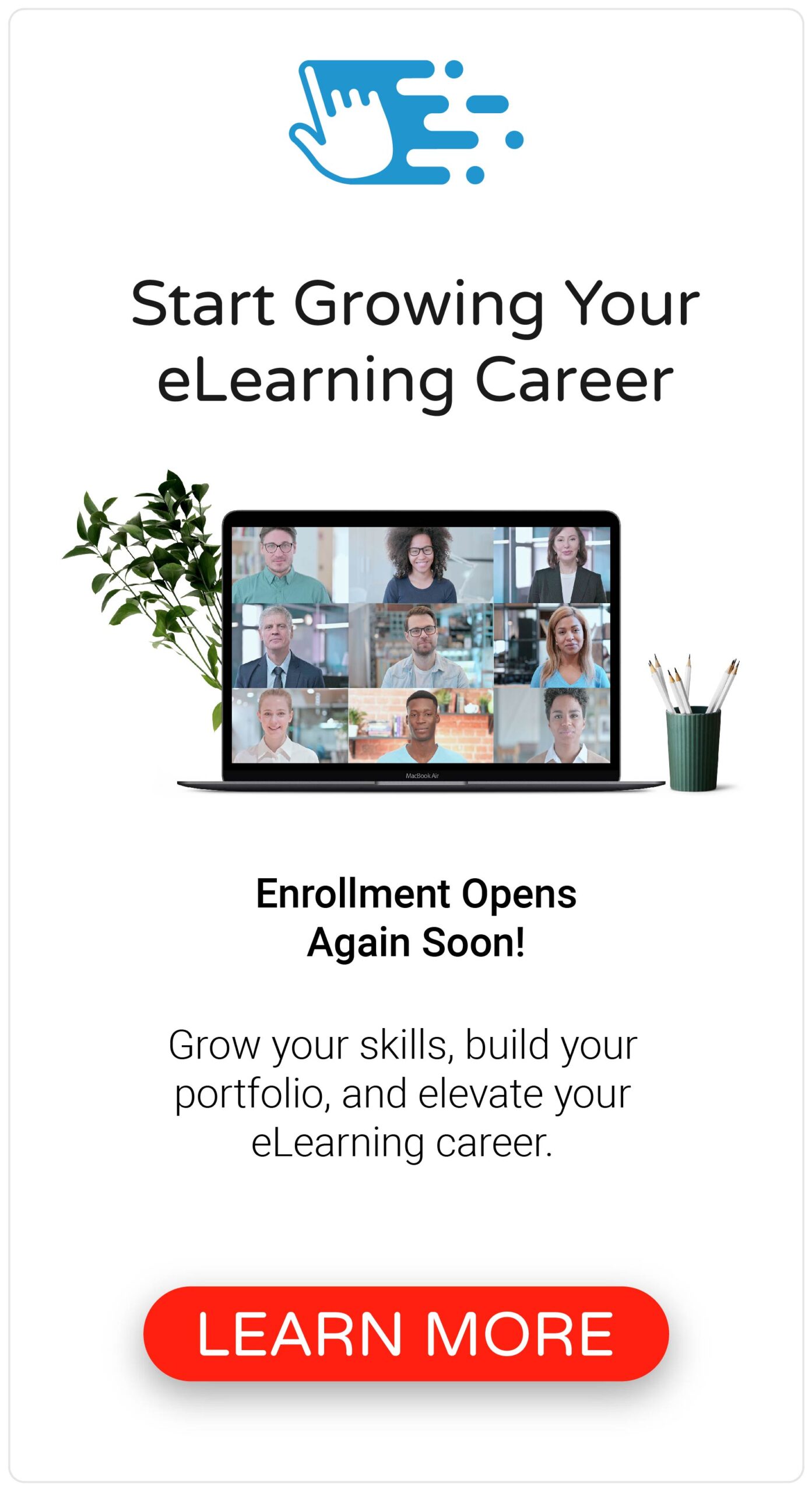Have you ever started an eLearning course, only to discover that you’re forced to watch a navigation tutorial on how to adjust the volume and click the Next button to continue? If so, you know how annoying it can be! Personally, I’ve never been a big fan of forced eLearning navigation tutorials. In fact, it’s easily one of my biggest eLearning pet peeves. More often than not, they don’t contain any information that helps, and I’d rather get on to the actual learning content.
And trust me, I already know what you’re thinking:
“But Tim, I have learners who don’t regularly use computers. Are you suggesting that we shouldn’t provide any assistance to these folks?!”
Not at all! I never said we should abolish navigation tutorials or assistance. The problem is when you force them upon all of your learners. So, in this post, I’m sharing my top three tips for designing better eLearning navigation tutorials.
Make Your eLearning Easier to Use
My first tip for designing better eLearning navigation tutorials is to design a course where you don’t need to show your learners how to use the course in the first place! Too often, it’s easy to forget that as eLearning designers, we’re also user interface designers. So, when you’re creating your eLearning course, strive to make it as simple and intuitive to use as possible.
If you have to teach your learners how to use your course, then you might need to redesign your course.
You can make your eLearning courses easier to use by removing redundant and confusing navigation items. Remove buttons that do the same thing and make sure your buttons look and function like buttons by adding hover, down, locked, and selected states.
Provide Navigational Clues
My second tip for designing better eLearning navigation tutorials is to provide clues when they’re needed. Rather than forcing you learners to watch a tutorial at the start of your course, provide the necessary guidance at the moment of need.
For example, if you want your learners to click a button or complete an interaction, add some on-screen text or audio narration explaining what you want your learner to do. Another option is to use subtle animations to bring attention to interactive objects, etc.
Let Your Learners Skip It
My third and final tip for designing better eLearning navigation tutorials is to let your learners skip it! If you must include a navigation tutorial at the beginning of your course, give your learners an option to opt-out.
Yes, some learners do need the assistance, but not all. Trust me, there are 2.8 billion smartphone users worldwide; there’s a good chance most of your learners don’t need to be told what the Next button does or how to adjust the volume.
The Bottom Line
Forcing your learners to sit through an eLearning navigation tutorial isn’t necessary. Instead, find ways to design your eLearning course in a way that it doesn’t need to come with instructions. And of course, if some of your learners need assistance, give it to them in a way that doesn’t affect all of your learners.
What other tips can you share for designing better eLearning navigation tutorials? Share your tips by commenting below!








I go all-in with providing navigational cues at the moment of need.
My inspiration for this is Campo Santo’s “Firewatch”, (https://youtu.be/66DJc9hPXQ4?t=11), a game that has a very simple UI.
It uses everyone’s natural desire to click something to ease the player into the game mechanics.
As you progress, more advanced controls are layered in (https://youtu.be/66DJc9hPXQ4?t=74).
I’ve used this approach for the elearning that I’ve developed. It doesn’t wreck the flow of the experience, and makes every interaction purposeful and relevant.
“Navigational cues at the moment of need” is the approach that I think works the best for everyone. Thanks for sharing, John!